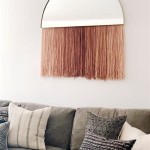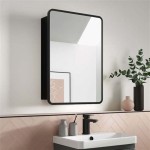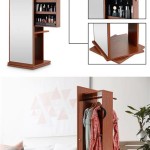Plate Glass Mirrors
Plate glass mirrors represent a significant advancement in mirror manufacturing, offering superior optical clarity and a smooth, undistorted reflection compared to earlier methods. Understanding their production process, characteristics, applications, and limitations is crucial for selecting the appropriate mirror for specific needs.
Historically, mirror production relied on techniques like blowing or drawing glass cylinders and then flattening them. This often resulted in imperfections and distortions in the reflected image. The development of plate glass manufacturing revolutionized the process. This method involves pouring molten glass onto a flat surface, typically a molten tin bath known as the float glass process, or rolling the molten glass between rollers. After cooling and annealing, a smooth, flat sheet of glass is produced, providing an ideal substrate for creating high-quality mirrors.
The creation of a plate glass mirror involves depositing a reflective coating onto one surface of the polished plate glass. The most common coating material is silver, due to its high reflectivity across the visible light spectrum. The silvering process typically involves a chemical reaction that deposits a thin, uniform layer of silver onto the glass. This silver layer is then protected by a layer of copper, followed by one or more layers of paint or other protective coatings. This protective backing prevents oxidation of the silver and enhances the mirror's durability.
Several factors contribute to the quality and performance of a plate glass mirror. The flatness and smoothness of the glass substrate are paramount. Any imperfections in the glass surface will translate into distortions in the reflected image. The quality and thickness of the silvering are also critical. A thicker silver layer generally results in higher reflectivity, while a uniform coating ensures consistent reflectance across the entire mirror surface.
The thickness of the plate glass itself influences the mirror's durability and resistance to warping or bending. Thicker glass is generally more robust and less susceptible to distortions, making it suitable for larger mirrors or applications where structural integrity is important. However, thicker glass also increases the weight of the mirror, which needs to be considered during installation and handling.
Plate glass mirrors find applications in a wide range of settings. In residential environments, they are commonly used in bathrooms, bedrooms, and hallways. Their clear, undistorted reflections make them ideal for personal grooming and enhancing the aesthetics of a space. Larger plate glass mirrors can be used to create a sense of spaciousness in smaller rooms.
Commercial applications are equally diverse. Retail stores utilize plate glass mirrors in dressing rooms and display areas. Gyms and dance studios often feature large wall-mounted mirrors to allow individuals to monitor their form and technique. Architectural applications include decorative wall cladding and interior design elements. Plate glass mirrors also play a crucial role in optical instruments, scientific equipment, and solar energy systems.
Despite their numerous advantages, plate glass mirrors have certain limitations. They are susceptible to breakage upon impact, although advancements in tempered glass and safety backing can mitigate this risk. The silvering can also be damaged by moisture or harsh chemicals, leading to discoloration or reduced reflectivity. Proper care and maintenance are essential to preserve the mirror's appearance and functionality.
The reflectivity of a standard plate glass mirror is typically around 90-95% for visible light. While this is high, specialized mirrors with enhanced reflectivity, using dielectric coatings for example, are available for applications requiring maximum light return, such as telescopes or laser systems.
The cost of plate glass mirrors varies depending on factors such as size, thickness, and any additional features like beveling or framing. Larger mirrors and those made from thicker glass generally command higher prices. Specialized coatings or treatments, such as anti-reflective coatings or safety backing, can also influence the overall cost.
When selecting a plate glass mirror, consider the intended application, desired size and thickness, and any specific requirements regarding reflectivity or durability. Careful evaluation of these factors will ensure the selection of a mirror that meets the specific needs of the project or environment.
Modern advancements continue to improve plate glass mirror technology. Developments in coatings and glass manufacturing processes enhance reflectivity, durability, and safety. These innovations ensure that plate glass mirrors remain a versatile and essential component in various applications, from everyday household use to advanced scientific instrumentation.

Plate Glass Mirror Hewi

Mirrormate Frame Added To The Plate Glass Wall Mirror What A Transformation In This Master Bath Small Bathroom Makeover Mirrors Diy

How To Remove A Plate Glass Mirror Doctor

Plate Glass Mirror Hewi

American Specialties Inc 18 X 30 Plate Glass Mirror With Stainless Steel Inter Lok Angle Frame

How To Frame A Mirror

Stainless Steel Inter Lok Angle Frame Plate Glass Mirror With Shelf Variable Sizes 0605 Series American Specialties

Adjustable Tilt Inter Lok Frame Plate Glass Mirror Variable Sizes 0600 T Series American Specialties

Before After Bathroom Mirror Makeovers Wall Bedroom

How To Decorate A Bathroom 9 New Ideas Bob Vila








